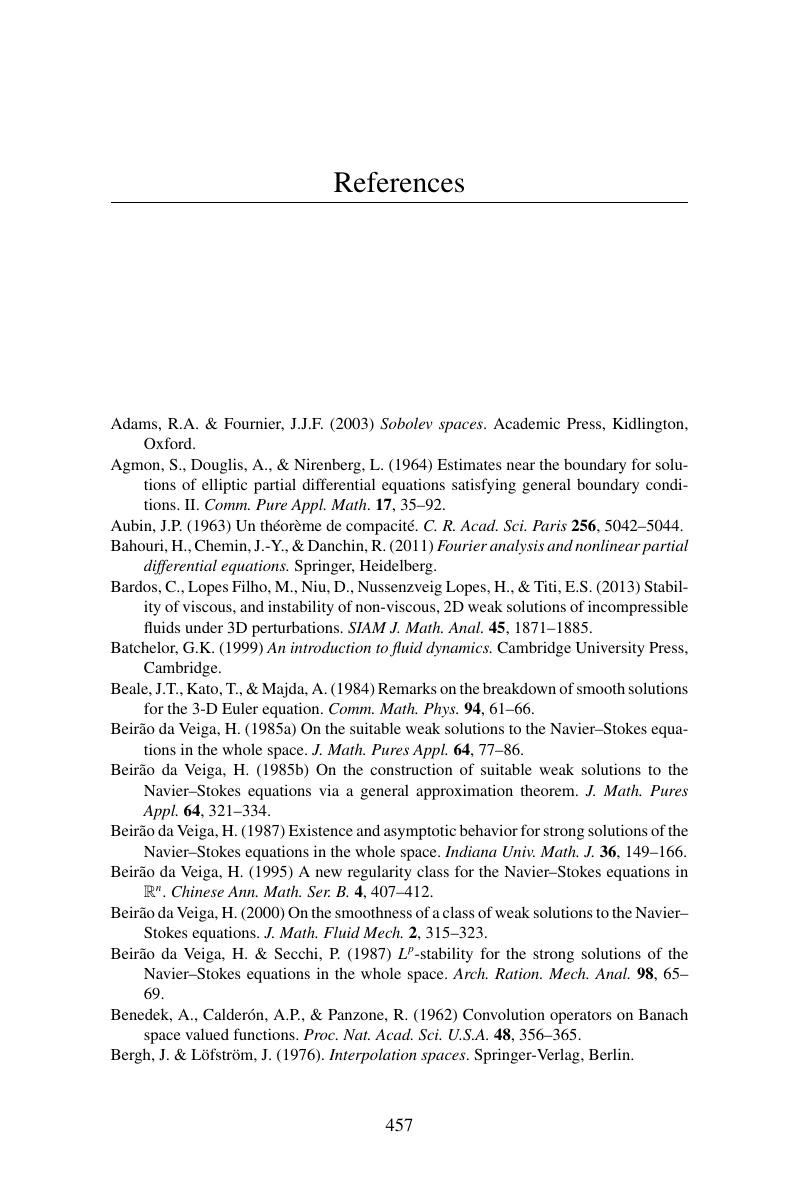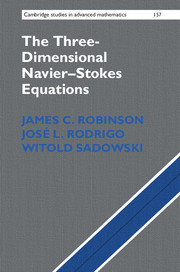Book contents
- Frontmatter
- Dedication
- Contents
- Preface
- Introduction
- PART I WEAK AND STRONG SOLUTIONS
- PART II LOCAL AND PARTIAL REGULARITY
- Appendix A Functional analysis: miscellaneous results
- Appendix B Calderón–Zygmund Theory
- Appendix C Elliptic equations
- Appendix D Estimates for the heat equation
- Appendix E A measurable-selection theorem
- Solutions to exercises
- References
- Index
- References
References
Published online by Cambridge University Press: 05 September 2016
- Frontmatter
- Dedication
- Contents
- Preface
- Introduction
- PART I WEAK AND STRONG SOLUTIONS
- PART II LOCAL AND PARTIAL REGULARITY
- Appendix A Functional analysis: miscellaneous results
- Appendix B Calderón–Zygmund Theory
- Appendix C Elliptic equations
- Appendix D Estimates for the heat equation
- Appendix E A measurable-selection theorem
- Solutions to exercises
- References
- Index
- References
Summary

- Type
- Chapter
- Information
- The Three-Dimensional Navier–Stokes EquationsClassical Theory, pp. 457 - 466Publisher: Cambridge University PressPrint publication year: 2016



